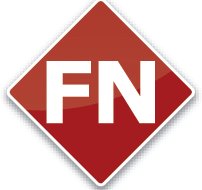
More regulations and thicker guardrails could be coming to the U.S. art market. The newly proposed Art Market Integrity Act, introduced by Senators John Fetterman (D-PA), Chuck Grassley (R-IA), Sheldon Whitehouse (D-RI), Bill Cassidy (R-LA), Andy Kim (D-NJ) and David McCormick (R-PA), aims to bring the U.S. in line with anti-money laundering standards already enforced in the U.K., E.U. and Switzerland—closing the loopholes that have long made American soil a haven for illicit art-world dealings.
Once enacted into federal law, the Art Market Integrity Act would require art dealers and auction houses to comply with anti-money laundering (AML) and counter-terrorism financing regulations under the Bank Secrecy Act (BSA), including customer due diligence (CDD), currency transaction reporting, suspicious activity reporting and recordkeeping.
The bill targets high-risk transactions in the art market while carving out exemptions for artists and small businesses with less than $50,000 in annual art sales. Sales under $10,000 would also be exempt, potentially offering some breathing room for the contemporary art ecosystem and potentially pushing more deals into that lower tier.
The new oversight mirrors European frameworks, applying scrutiny not just to galleries and dealers but also to intermediaries and fiduciaries such as advisors, consultants, custodians, collectors and even museums. The law would cover “any other person who engages as a business as an intermediary in the sale of works of art,” regardless of their primary profession.
Notably, the bill defines a “work of art” narrowly: original paintings, sculptures, watercolors, prints, drawings, photographs, installation art and video art all qualify. Excluded are applied arts like product, fashion, architectural and interior design, along with mass-produced decorative items such as ceramics, textiles and carpets.
“Art should be for art-lovers, not terrorists and criminals,” said Senator John Fetterman in a statement. “For too long, loopholes have allowed Russian criminal kingpins to evade sanctions and terrorists like Hezbollah to funnel money through art deals.”
The bill has already drawn endorsements from the Antiquities Coalition, Transparency International U.S., the FACT Coalition, FDD Action, the American Jewish Committee, Razom for Ukraine, the American Coalition for Ukraine, the Initiative for the Recovery of Venezuelan Assets (INRAV), the National Border Patrol Council and the Federal Law Enforcement Officers Association (FLEOA).
“For decades, criminal enterprises have treated America’s multibillion-dollar art industry like a personal piggy bank—laundering money, financing terrorism, and conducting other illicit schemes,” said Senator Chuck Grassley in a statement. “This bipartisan legislation would bring the art market in line with existing anti-money laundering and counter-terrorism laws, keeping both artwork and millions of dollars out of the wrong hands.”
Europe, notably, got there first. On January 10, 2020, the E.U.’s Fifth Anti-Money Laundering Directive (5AMLD) introduced AML/CFT obligations for art market participants—dealers, galleries and auction houses included—on transactions of €10,000 or more, regardless of payment method. The rules mandated customer due diligence (CDD), know-your-customer (KYC) protocols, verification of beneficial ownership, transaction monitoring, suspicious activity reporting (SARs) to financial intelligence units (FIUs) and five-year record retention. To operate legally, dealers must complete AML training, appoint a nominated officer and implement internal controls and risk assessments. Penalties for non-compliance range from business closure to criminal prosecution.
A follow-up, the Sixth AML Directive (Directive (EU) 2024/1640), along with the Single Rulebook Regulation (EU 2024/1624), came into effect this May. It harmonizes enforcement across member states and strengthens sanctions, whistleblower protections and FIU coordination under a new centralized watchdog: the E.U.’s Anti-Money Laundering Authority (AMLA). Headquartered in Frankfurt and officially operational as of July 1, 2025, AMLA marks the E.U.’s first supranational body dedicated to overseeing money laundering and terrorism financing.
The updated regulations also expand compliance requirements to include crypto asset service providers, luxury goods and art dealers, real estate brokers and crowdfunding platforms—and, starting in 2029, football clubs and agents.
Meanwhile, the Sixth AML Directive (2024/1640), also established last May, now requires all 28 E.U. member states to implement national enforcement mechanisms by July 10, 2027. The U.K. also applies the E.U.’s Fifth Anti-Money Laundering Directive (5AMLD), which was introduced before Brexit took hold. Although no central authority like the E.U.’s AMLA exists in the U.K., oversight by HMRC has grown more assertive, particularly since 2022, signaling a clear intent to enforce.
In parallel with its AML efforts, the E.U. rolled out Regulation 2019/880, aimed at curbing the illicit trafficking of antiquities and cultural artifacts. Effective as of June 28, 2025, the regulation mandates that art dealers and auction houses provide extensive documentation on provenance when importing or selling items over 200 years old from outside the E.U., if valued above €18,000 (including shipping, taxes and fees). Even stricter requirements apply to objects more than 250 years old.
While these measures aim to increase transparency and accountability in the art trade, they come at the cost of mounting bureaucracy. For many operators—especially smaller businesses—the burden of compliance is steep: complex paperwork, rising legal costs and import procedures that can now drag on for as long as five months, potentially discouraging buyers. Yet for those who may have considered sidestepping these constraints by relocating to more lenient jurisdictions like the U.S., Washington’s move to tighten its own rules could mean that an escape hatch is rapidly closing.









